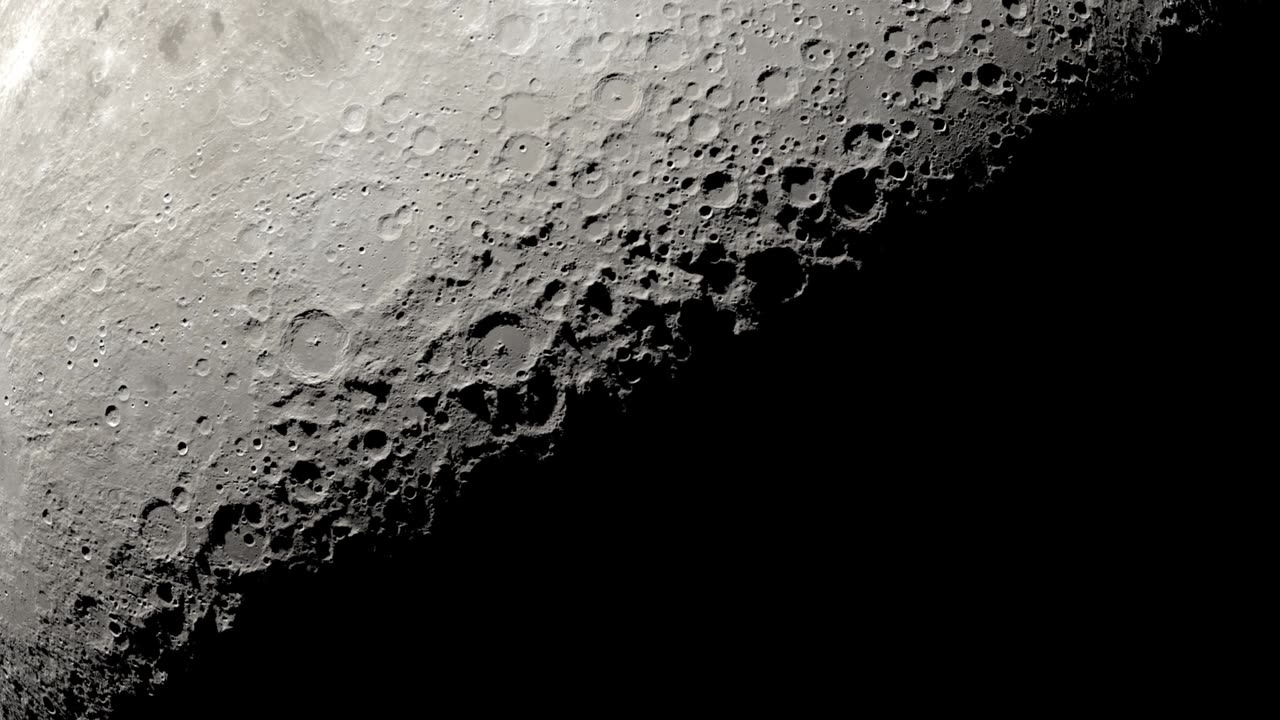Premium Only Content

Shadow nears the moon,scientific visualization.
At the Moon's North and South Poles, the Sun is never more than 1.5° above or below the horizon. The resulting pattern of daylight and shadows is unlike anywhere else on the Moon — or on Earth. After zooming in on a small lunar highland area near the South Pole, this visualization recreates the illumination conditions there over a period of two lunar days, equal to two months on Earth.
This close to the pole, the Sun doesn't rise and set. Instead, as the Moon rotates on its axis, the Sun appears to skim the horizon, traveling a full 360 degrees around the terrain. Mountains as far as 75 miles (120 kilometers) away cast shadows across the landscape. With the Sun at such a low angle, its light can never reach the floors of some deep craters. Places that sunlight never reaches are known as permanently shadowed regions. These are some of the coldest spots in the solar system, and because of that, they trap volatile chemicals, including water ice, that would immediately sublimate (transform directly from a solid to a gas) in the harsh, airless sunshine that illuminates most other places on the Moon.
-
 LIVE
LIVE
Sean Unpaved
2 hours agoIs Lane Kiffin Staying At Ole Miss Or LEAVING For LSU? | UNPAVED
153 watching -
 29:48
29:48
The White House
2 hours agoPresident Trump and The First Lady Participate in the Thanksgiving Turkey Pardoning
4.54K12 -
 LIVE
LIVE
The Charlie Kirk Show
1 hour agoMark Kelly Court Martial + AI Embargo + Thanksgiving | Davis, Federer, Newcombe | 11.25.2025
3,726 watching -
 53:20
53:20
The Rubin Report
2 hours agoLara Trump Destroys Bill Maher’s Narrative w/ Facts in 1 Minute
13.8K32 -
 LIVE
LIVE
TheAlecLaceShow
1 hour agoGuest: Rep. Tim Burchett | Ukraine Russia Peace Deal | Trump SLAMS Seditious 6 | The Alec Lace Show
46 watching -
 LIVE
LIVE
LFA TV
15 hours agoLIVE & BREAKING NEWS! | TUESDAY 11/25/25
2,826 watching -
 1:08:44
1:08:44
VINCE
5 hours agoThe Deep State Strikes Back! (Guest Host Shawn Farash) | Episode 176 - 11/25/25 VINCE
179K125 -
 2:14:00
2:14:00
Benny Johnson
3 hours agoIt's All True, The 2024 Election Was Ready To Be Rigged. The REAL Story of How Trump-Elon STOPPED It
46.3K68 -
 LIVE
LIVE
The Mel K Show
2 hours agoMORNINGS WITH MEL K - A Republic.. If You Can Keep It! 11-25-25
781 watching -
 LIVE
LIVE
The Shannon Joy Show
2 hours agoDOGE Is DEAD * Trump’s Golden Economy Implodes * LIVE Exclusive With Galileyo CEO Brett Miller
144 watching